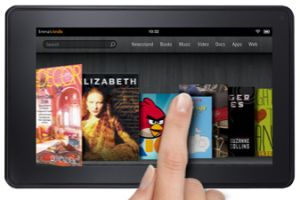Kindle Fire will force Android users to choose

The unveiling of Amazon's latest Kindle devices including a new tablet will have "significant implications" for Android developers looking to ensure compatibility and force consumers to choose between Amazon and Google.
In a statement Thursday, Ovum said the Kindle maker not only set itself on a path headed directly for Apple, which currently dominates the tablet market with its iPad device, the Amazon also created issues for developers by tapping its own Android appstore and browser, called Silk.
Available from Nov. 15, but only in the United States, the Kindle Fire tablet runs on Android.
Adam Leach, the research firm's practice leader, said: "It appears Amazon is positioning its own services above those of Google's by using the Amazon Android appstore, and its own mobile browser based on its own dynamic split browsing technology, essentially creating its own variant of Android.
"This will have significant implications for developers wishing to deploy Android applications to the device if the two platforms do not remain compatible. It will also force consumers to choose if Amazon's set of services are more valuable to them than Google's when buying a tablet," Leach noted.
By offering a consumer-oriented media device, Amazon was also placing itself in direct competition against Apple and hoping to lure customers by offering direct access to its wide content library comprising books, music, films and TV shows, he said.
The Kindle Fire's pricetag of US$199 would be a critical component in helping the company gain traction in the tablet market, where the iPad had become the de facto standard, he noted.
"Rival manufacturers [to Apple] have failed to attract consumers as they have matched the iPad's pricepoint without matching its content offering, whereas the Kindle Fire has access to Amazon's content store and is half the price of the cheapest iPad model.
"Amazon's retail-based business model allows the company to subsidize the device on the premise that consumers will buy more from Amazon, be that physical goods or its digital content. This model is the direct inverse of Apple's model; Amazon is selling a device in order to sell more content, whereas Apple sells content in order to sell more devices," Leach said.
Amazon, however, would still need to attract customers to the device, having opted for a 7-inch display--similar to RIM's PlayBook--which, so far, have yet to gain popularity among consumers, the Ovum analyst noted. He added, though, that it remains to be seen this lack of demand this is due the screensize or other aspects of those devices.

According to Ovum projections, shipment of tables and other mobile Internet devices running "lite" operating systems would hit 41 million by end-2011 and 219 million by 2016.
Amazon did not reveal any details about the launch or availability of Kindle Fire outside the United States.